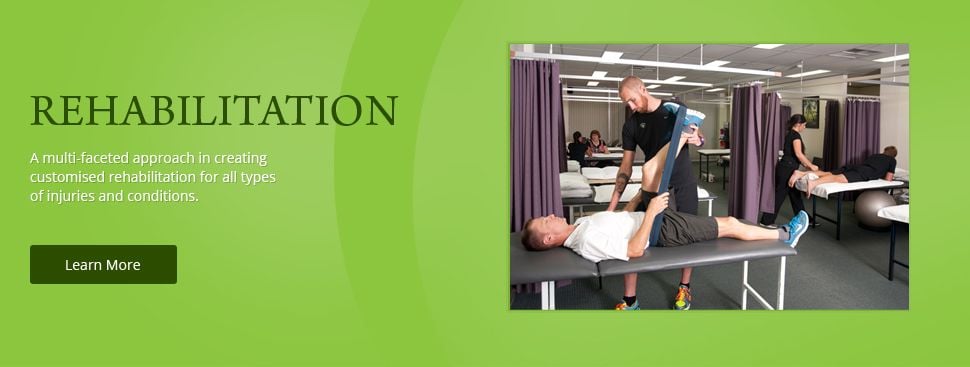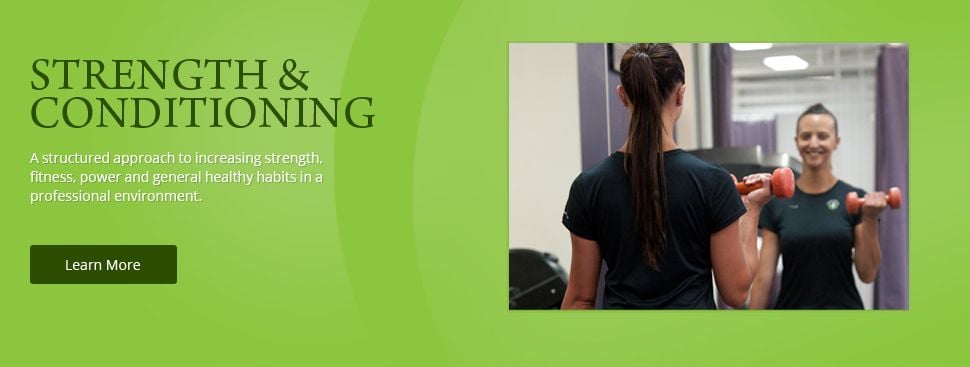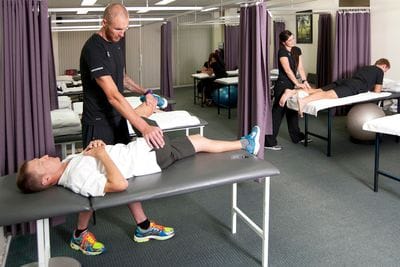Exercise Physiology
Individualised and structured exercise programs, specialised in return from injury, athletes or individuals wanting to improve performance, strength, power, speed, endurance, flexibility and/or overall lifestyle.

Gluteal Tendinopathy
)
Do you suffer from pain in the side of your hip?
You may in fact have some gluteal (the muscles in your bottom) tendinopathy (generic descriptor of the clinical conditions (both pain and pathological characteristics) associated with overuse in and around tendons. Tendinopathy generally involves tendon inflammation and/or tiny tears in the connective tissue in or around the tendon).
One in four women over the age of 50 has been shown to have gluteal tendinopathy and it is thought that it occurs due to a failed adaptation to persistent load. This may manifest itself as a difficulty with weight bearing tasks (e.g. running, hopping), particularly single-leg tasks as well as non-weight bearing activities (e.g. sleeping at night, especially if you lie on the painful side).
Bursitis may present as a secondary manifestation of this primary gluteal tendinopathy due to constant wear and pressure on the bursa in the same region and often only the bursitis itself is diagnosed.
Commonly reported mechanisms that may cause gluteal tendinopathy include:
- An increase in exercise (e.g. walking, running), particularly in active woman, 40-60 years of age.
- Pain associated with side-lying, both on the affected side (compression of the tendons), as well as lying on the unaffected side. This is because the sore hip can then be resting in a position of flexion and adduction which puts the tendons on stretch.
- Prolonged sitting, particularly in low chairs. Sitting with crossed legs will further increase tension and compression of lateral hip structures.
Compression of the deep surface of gluteus medius and minimus tendons can often occur in the stance phase of weight bearing exercise. This compression, combined with repeated overload (without adaptation), may be a key component in this continuum of tendon pathology.
Movements that create the most compression (and provocation) include:- hip flexion (lifting your knee towards your chest)
- hip adduction (pulling your leg in towards your other leg or the midline of the body)
- hip internal rotation (twisting the hip in towards the midline of the body)
Activities to avoid if you suspect glueteal tendinopathy:
- Low sitting
- Crossing legs
- Standing with more weight on one leg, such as carrying a child on your hip
- Position of hip flexion, adduction and internal rotation
- Corticosteriod injections. This may create disagreement, however evidence suggests that corticosteroid use in the tendon dysrepair phase may promote further matrix breakdown.
Strengthen gluteus medius and gluteus minimus with the focus on restoring normal functional movement should be the primary focus in order to prevent the gluteal tendinopathy from returning. This can be done by seeing a Physio/Exercise Physiologist for a specifically tailored strengthening program.
http://physiodevelopment.com/gluteal-tendinopathy-pathiology-lateral-hip-pain
If you suspect you may be suffering from gluteal tendinopathy or another hip problem (or even a problem completely unrelated to the hip/glutes), call Active Body on (02) 9899 8242 for a full assessment and treatment of your condition in order to return you to a happy, pain-free, active lifestyle!


)
)
)




